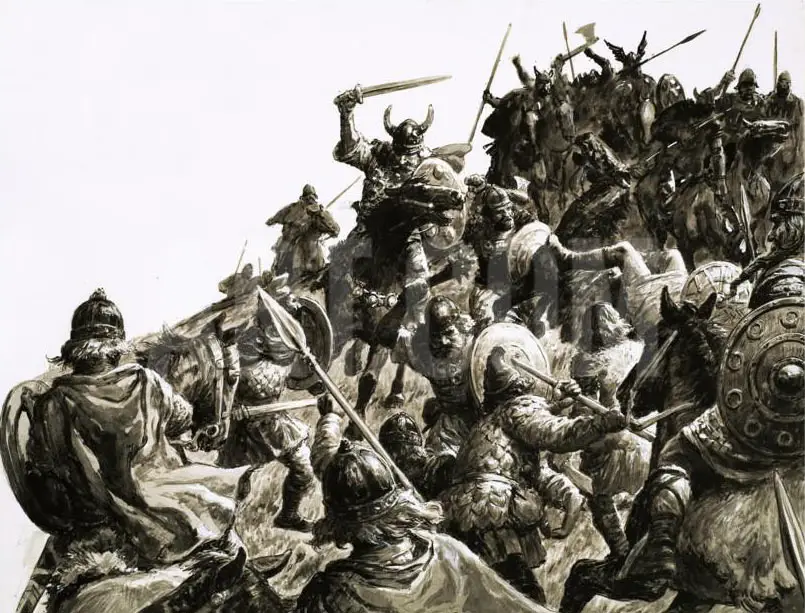|
Alfred the Great
The Danes had been taking more and more territory for nearly a century when a determined English army took the field at Ashdown, on the Berkshire downs, in 871. When the heavy fighting had finished, nine Danish earls and one Danish king lay dead; furthermore, the English had won the day. And commanding the English forces on that day of January 8, 871 was a young prince of Wessex named Alfred. Alfred was then just 21. His older brother, Æthelred, was King of Wessex and had been since 865, the third king to succeed his father, Æthelwulf, on the throne of Wessex, which by that time was the last kingdom standing against the steadily advancing Danes. (Æethelbald and Æethelbert had ruled for eight years combined–steadily losing territory to the Danes, including the city of Winchester, which was burned, and York) before Æthelred took over.) The invaders had absorbed the north and the east, including Kent, and were making their way south and west. It was near the end of the year 870 that Danish longboats sailed up the River Thames toward Reading, a strategic place at the junction of the Thames and the River Kennet. The Danes had no trouble taking Reading, and the English defenders fled to the west, to Englefield, on December 28. They attempted to retake the city on January 4 the following year but were repulsed. By this time, the call had gone out for reinforcements.
Early in the morning, the Danes set out to seize a hill that would give them command of the surrounding area. Alfred saw this and saw the need to move to intercept. Casting about for an order to attack, he found that his brother the king was busy leading his half of the army in a prayer meeting. Putting immediate need ahead of possible divine intervention, Alfred spurred his men on and engaged the enemy, charging up the hill with abandon. Æthelred and the rest of the English force arrived a bit later, and the two halves became one.The battle lasted most of that day and at the end of it, it was the Danes who were retreating. Alfred had seized the initiative and gained for his people, his brother, and himself a great victory. It was a relatively small victory in the grand scheme of the ongoing struggle, but it was a victory all the same. One thing that historians cannot agree on is the exact location of the battle. The surrounding area has been built on and over for several centuries now, making it more difficult to pin down which hill it was that the Danes seized–and then lost–on that day. |
|
Social Studies for Kids
copyright 2002–2024
David White



 The English force that took the field at the Battle of Ashdown was rather large, as was the Danish force that opposed the English. King Æthelred was there, at the head of one half of the English force; commanding the other half was Alfred.
The English force that took the field at the Battle of Ashdown was rather large, as was the Danish force that opposed the English. King Æthelred was there, at the head of one half of the English force; commanding the other half was Alfred.
